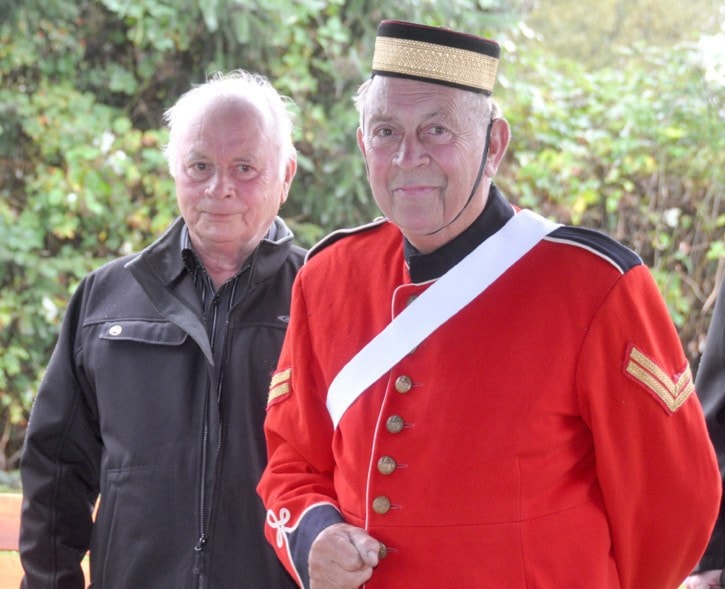Brothers Keith and John Jackman were among the family members present for the dedication of the Philip Jackman cairn at Aldergrove’s Kinsmen Heritage Park last month. The cairn commemorates the contributions of their great grandfather Philip, a Royal Engineer from England who came to Canada in service of Queen Victoria in 1859, at the age of 24. Philip and wife Sara (Lovegrove) settled in Aldergrove in 1872 and built the first home here at the site of what is now Philip Jackman Park and Kinsmen Heritage Park.
The first of their six children, Philip Jr. (Keith and John’s grandfather) and wife Anne Caroline (Wadel) homesteaded on Ross Road where they logged and farmed their 135 acres. A logging accident cut Philip Jr.’s life short and he passed away in 1922, five years before his father died at 92.
The oldest of their 10 children was James Andrew Jackman (Keith and John’s father) and at the age of 18 he assumed the role of head of the family on his father’s death. Times were hard but he married Gladys (Lidstone) and bought the homestead farm from the family. The couple had three children; John, Keith and Margeurite.
Keith and John recall that, “The Aldergrove Farmers Institute was on Station Road and when the secretary decided to retire my father took it over. We moved the “powder house” which was approximately six feet wide by eight or ten feet in length to his farm on Ross Road. We moved it with my father’s horses sometime in the late ‘30s or early ‘40s. The main purpose was to provide stumping powder and caps to members -- Fred Greer hauled the powder and supplies. At one time long after my father retired he still had the record books, etc.”
“Fred Greer at that time did all the hauling for Otter Farmers Institute (today known as Otter Co-op). The powder house had six inch walls filled with sawdust to keep the moisture out of it.”
